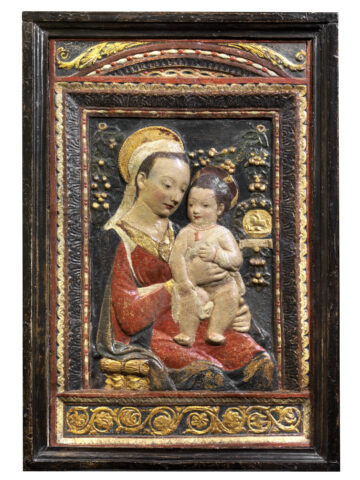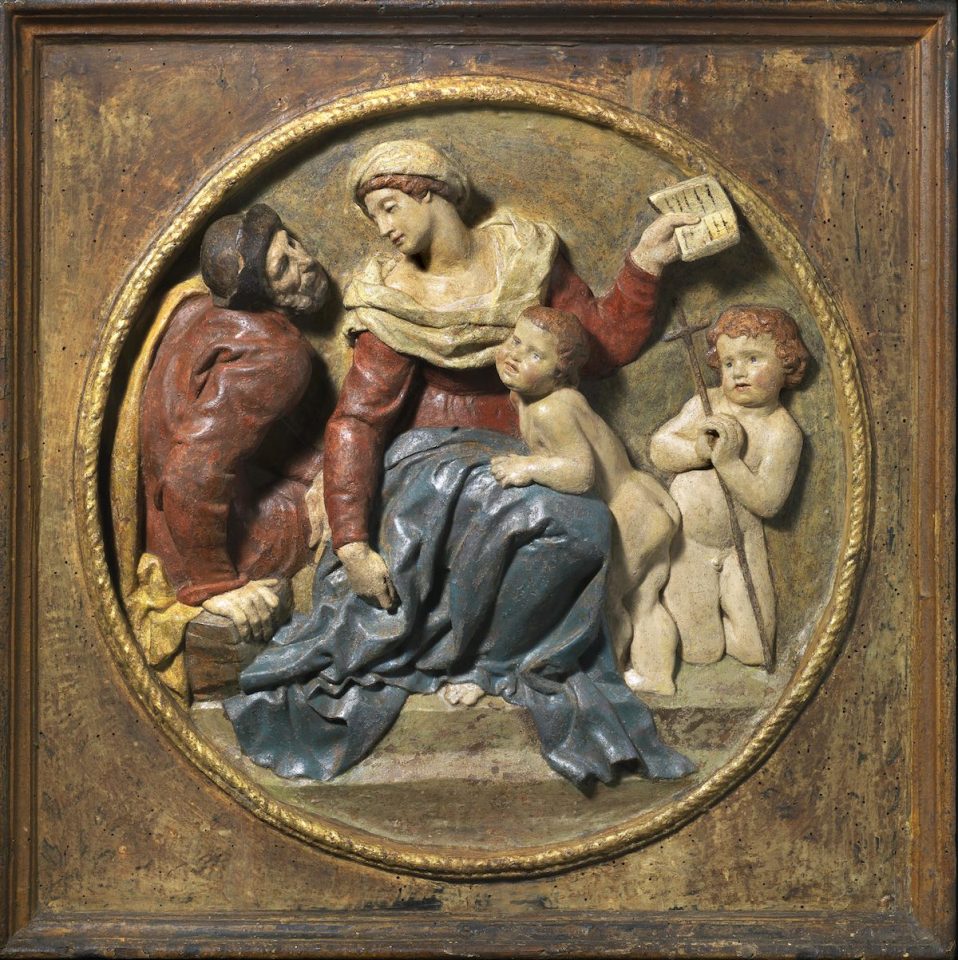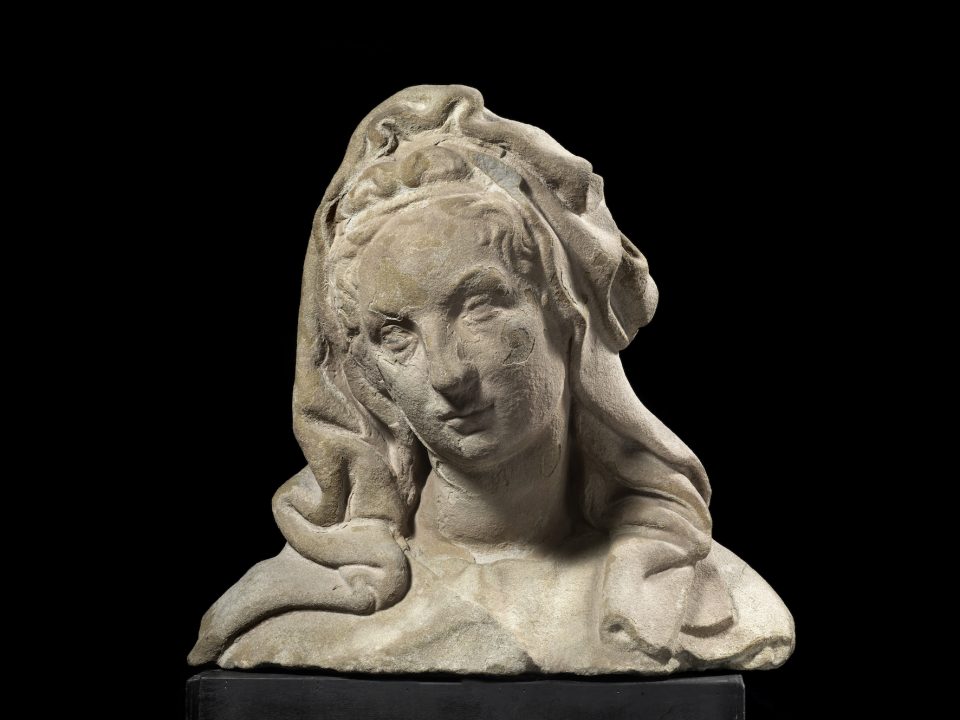ANTONIO ROSSELLINO, WORKSHOP OF
Settignano, 1427 – Florence, 1479
Madonna and Child
Polychrome and gilded stucco, cm 79×53,5
This bas-relief in polychrome and gilded stucco depicts the Madonna and Child and is attributed to the workshop of Antonio Rossellino. The beautifully dressed and coiffed Madonna is shown sitting within a tabernacle-like frame, lovingly holding the Child in her arms, wrapped in a fine white cloth. The background of the work is adorned with a garland of vine leaves and golden floral decorations, giving a sense of harmony and grace to the overall composition.
The origin of the work remains unknown. It is one of several examples derived, using different techniques (stucco, terracotta, embossed leather), from an original probably attributed to Antonio Rossellino (Florence, 1472–1479), the author of a renowned marble relief in the Hermitage in St Petersburg. According to information reported by Frizzoni in 1916, other examples of similar reliefs are scattered throughout various international collections. In 1972, Negri Anroldi mentioned an example in London that shows some variations from the original prototype.
Meanwhile, in 1964, John Pope Hennessy identified three main strands of variants based on the background motif: a garland (as in the Forli and London examples), two cherubs and clouds (as in St Petersburg), and a rose garden (as in the Musée Jacquemart-André in Paris). Subsequently, in 1977, Bellosi expanded this classification to include pieces showing further variants, such as a damask veil worn by the Virgin or a damask background, the latter often polychromed at will, as evidenced in the example from the Ospedale degli Innocenti in Florence.
This work is not only testimony to the artistic excellence and religious devotion of the time, but also to the circulation and reinterpretation of a highly successful iconographic model in the Italian Renaissance.





